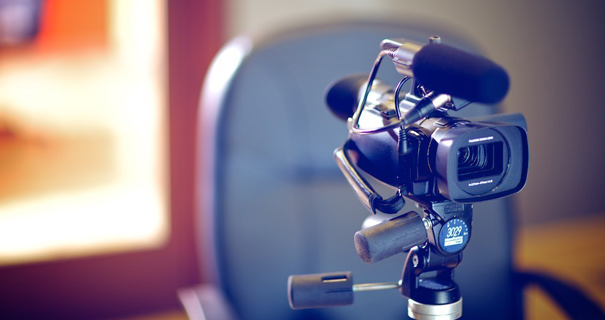Why Trial Presentations Are Critical for Effective Cross-Examination in Court
Why Trial Presentations Are Critical for Effective Cross-Examination in Court
Blog Article
The Power of Visuals in Test Presentations for a Winning Argument
The assimilation of visuals in test discussions has actually arised as an essential factor in effectively communicating complex arguments to jurors. By making use of numerous kinds of aesthetic help-- be it diagrams, photos, or animations-- attorneys can boost understanding and retention, inevitably forming the court's understanding of the situation.
Significance of Visuals in Trials
In many lawful setups, visuals play a vital function in improving the effectiveness of trial discussions. The assimilation of aesthetic elements can significantly influence jurors' understanding and retention of intricate info, thereby forming their assumptions and choices. Visuals, such as charts, layouts, and pictures, can simplify intricate stories, making them a lot more easily accessible and engaging.
Moreover, the human mind procedures visual information extra effectively than text, which emphasizes the value of incorporating visuals right into legal arguments. By equating dense lawful ideas into aesthetic styles, lawyers can assist in clearer interaction, ensuring that vital points are not forgotten during tests.
Furthermore, visuals offer to involve jurors on an emotional degree, fostering a link to the case that words alone might stop working to achieve. The calculated use of visuals can evoke compassion, motivating jurors to consider the human facets of the case.
Eventually, the importance of visuals in trials exists in their ability to improve quality, improve juror interaction, and enhance the narrative existing. This powerful combination is necessary for crafting influential disagreements that reverberate with jurors and affect the outcome of lawful process.
Types of Visuals to Utilize
Reliable trial presentations can substantially benefit from a range of aesthetic devices that accommodate various facets of the case. trial presentations. Using layouts and graphes can efficiently break down complicated details, making it more digestible for jurors. Flowcharts can show the sequence of events, while bar graphs might succinctly contrast pertinent information factors.

Animations and simulations can likewise play a vital duty, especially in situations involving technical information or detailed circumstances. These visuals can dynamically represent processes or actions, providing clearness and interaction that fixed images may not achieve.
Furthermore, infographics combine text and visuals to sum up essential information effectively. They can present timelines, statistics, and significant instance factors in a visually appealing fashion, making it easier for jurors to comply with the debate.
Enhancing Comprehension and Retention

Enhancing understanding and retention throughout test presentations is critical for making certain that jurors realize the necessary components of an instance. Visual aids serve as powerful devices in this respect, equating complex details right into conveniently absorbable layouts. By using charts, layouts, and infographics, lawyers can simplify Recommended Reading intricate data and emphasize crucial points that may or else be neglected.
Studies have actually shown that people maintain information significantly much better when it exists aesthetically. This is particularly pertinent in a test setup, where jurors may be bewildered by the volume of proof and statement. By purposefully incorporating visuals, lawyers can direct jurors' interest to one of the most important aspects of the situation, enhancing their understanding and memory of the material offered.

Producing Engaging Discussions
Captivating jurors' focus during test presentations is crucial for communicating an engaging narrative. Involving presentations utilize visual components to create a remarkable experience that resonates with jurors. The calculated use of graphics, computer animations, and videos can illuminate complex details, making it more obtainable and relatable.

In addition, integrating storytelling strategies can boost engagement. Offering evidence in a sensible sequence that constructs psychological appeal allows jurors to get in touch with the product on an individual level. Varying presentation layouts, such as including brief video clips have a peek at these guys or interactive aspects, can likewise suffer interest and interest throughout the test.
Ultimately, an engaging discussion fosters a much more extensive understanding of the instance, enabling jurors to better value the arguments being provided and bring about a more positive end result.
Study and Success Stories
Numerous situation research studies highlight the substantial influence of visuals in trial presentations, demonstrating their capability to affect juror assumptions and ultimately the outcomes of situations. A noteworthy situation including a personal injury insurance claim showed exactly how the use of a 3D animation of the mishap scene cleared up complicated details. Jurors reported feeling more informed and empathetic, considerably swaying their decision in favor of the plaintiff.
In an additional circumstances, a company lawsuits situation used infographics to present monetary data and timelines, making intricate information accessible. The graph made it possible for jurors to realize the subtleties of the situation much more efficiently than great site verbal explanations alone. trial presentations. Therefore, the court returned a decision that surpassed the client's assumptions
The engaging visuals not only helped in developing question yet additionally resonated emotionally with jurors, leading to a pardon. These success stories emphasize the requirement of integrating visuals right into trial discussions, as they improve understanding, retention, and ultimately, the convincing power of legal arguments.
Verdict
In final thought, the critical consolidation of visuals in trial discussions significantly improves jurors' understanding and retention of intricate info. By making use of different kinds of visuals, attorneys can successfully make clear bottom lines and foster psychological connections with the audience. Engaging discussions, sustained by compelling situation researches, demonstrate the profound effect that visuals can carry persuasive communication. Eventually, the power of visuals acts as a vital component in achieving beneficial trial end results.
Report this page